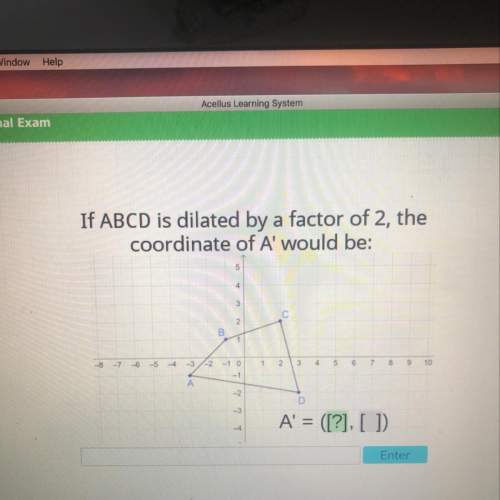
Mathematics, 06.10.2020 16:01 King1Gates
The probability for event A is 0.3, the probability for event B is 0.6, and the probability of events A or B is 0.8. Why are the events not mutually exclusive? The sum of P(A) and P(B) is less than P(A or B). The product of P(A) and P(B) is less than P(A or B). The product of P(A) and P(B) is not equal to P(A or B). The sum of P(A) and P(B) is not equal to P(A or B).

Answers: 1


Other questions on the subject: Mathematics


Mathematics, 21.06.2019 20:10, jackfrost5
The population of a small rural town in the year 2006 was 2,459. the population can be modeled by the function below, where f(x residents and t is the number of years elapsed since 2006. f(t) = 2,459(0.92)
Answers: 1

Mathematics, 21.06.2019 20:30, mariahcid904
Find the solution(s) to the system of equations. select all that apply y=x^2-1 y=2x-2
Answers: 2

Mathematics, 21.06.2019 23:00, xxYingxYangxx7670
What is the location of point g, which partitions the directed line segment from d to f into a 5: 4 ratio? –1 0 2 3
Answers: 1
You know the right answer?
The probability for event A is 0.3, the probability for event B is 0.6, and the probability of event...
Questions in other subjects:


Chemistry, 13.04.2020 19:56



History, 13.04.2020 19:56




Mathematics, 13.04.2020 19:56

Mathematics, 13.04.2020 19:56




